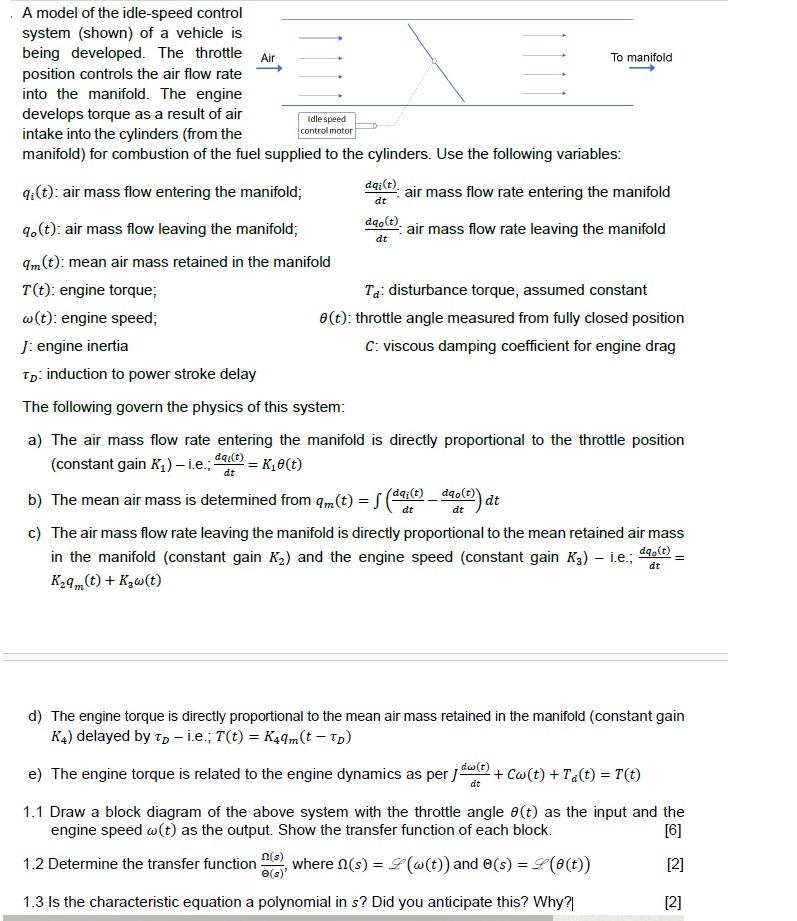Answered step by step
Verified Expert Solution
Question
1 Approved Answer
. A model of the idle-speed control system (shown) of a vehicle is being developed. The throttle position controls the air flow rate into

. A model of the idle-speed control system (shown) of a vehicle is being developed. The throttle position controls the air flow rate into the manifold. The engine develops torque as a result of air intake into the cylinders (from the manifold) for combustion of the fuel supplied to the cylinders. Use the following variables: q;(t): air mass flow entering the manifold; q.(t): air mass flow leaving the manifold; 9m (t): mean air mass retained in the manifold T(t): engine torque; w (t): engine speed; J: engine inertia TD: induction to power stroke delay The following govern the physics of this system: a) The air mass flow rate entering the manifold is directly proportional to the throttle position (constant gain K) -ie; dat) != K0 (t) dt Air Idle speed control motor dq;(t). dt To manifold air mass flow rate entering the manifold dao(t); air mass flow rate leaving the manifold dt Ta: disturbance torque, assumed constant e(t): throttle angle measured from fully closed position C: viscous damping coefficient for engine drag b) The mean air mass is determined from qm(t) = f( (da; (t) __ dao(t)) dt dt dt c) The air mass flow rate leaving the manifold is directly proportional to the mean retained air mass dqo(t) in the manifold (constant gain K) and the engine speed (constant gain K3) - i.e.; dt K9m (t) + Kw (t) d) The engine torque is directly proportional to the mean air mass retained in the manifold (constant gain K4) delayed by TD - i.e.; T(t) = K49m(t-TD) e) The engine torque is related to the engine dynamics as per jw() + Cw (t) + T (t) = T(t) dt 1.1 Draw a block diagram of the above system with the throttle angle 8(t) as the input and the engine speed w(t) as the output. Show the transfer function of each block. [6] 1.2 Determine the transfer function (6), where (s) = L(w(t)) and (s) = L(0 (t)) 1.3 Is the characteristic equation a polynomial in s? Did you anticipate this? Why?| [2] [2]
Step by Step Solution
★★★★★
3.40 Rating (147 Votes )
There are 3 Steps involved in it
Step: 1

Get Instant Access to Expert-Tailored Solutions
See step-by-step solutions with expert insights and AI powered tools for academic success
Step: 2

Step: 3

Ace Your Homework with AI
Get the answers you need in no time with our AI-driven, step-by-step assistance
Get Started


